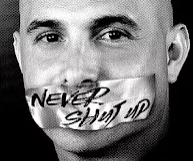➦In 1854....Edward Willis Scripps (Died – March 12, 1926). He was a newspaper publisher and founder of The E. W. Scripps Company, a diversified media conglomerate, and United Press news service. It became United Press International (UPI) when International News Service (INS) merged with United Press in 1958. The E. W. Scripps School of Journalism at Ohio University is named for him.
Both E. W. and his half-sister Ellen worked with his older half-brother, James when he founded The Detroit News in 1873. E. W. started as an office boy at the paper. In 1878, with loans from his half-brothers, E. W. went on to found The Penny Press (later the Cleveland Press) in Cleveland. With financial support from sister Ellen, he went on to begin or acquire some 25 newspapers. This was the beginning of a media empire that is now the E. W. Scripps Company.
In 1907, Scripps created United Press Associations, later the UPI news service, from smaller regional news services. Scripps later said "I regard my life's greatest service to the people of this country to be the creation of the United Press", to provide competition to the Associated Press.
➦In 1905....James Kern Kyser born in Rocky Mount NC (Died at age 80 from a heart attack – July 23, 1985). Known as Kay Kyser, he was a bandleader and radio personality of the 1930s and 1940s.
 |
| Kay Kyser |
"Kay Kyser's Kollege of Musical Knowledge." aired on the Mutual Broadcasting System in 1938 and then moved to NBC Radio from 1939 to 1949. The show rose in the ratings and spawned many imitators. Kyser led the band as "The Ol' Perfessor," spouting catchphrases, some with a degree of Southern American English terms: "That's right—you're wrong", "Evenin' folks, how y'all?" and "C'mon, chillun! Le's dance!"
Although Kyser and his orchestra gained fame through the "Kollege of Musical Knowledge," they were a successful band in their own right. They had 11 number one records, including some of the most popular songs of the late 1930s and early 1940s.
The band scored more than two dozen top 10 hits, including “Three Little Fishes”, “Jingle, Jangle, Jingle”, “The Old Lamplighter”, “There Goes that Song Again”, “Ole Buttermilk Sky”, “Managua Nicaragua”, “On a Slow Boat to China” & “Praise the Lord and Pass the Ammunition.” One of his singers, Mike Douglas, went on to be a star of daytime TV.
➦In 1908...Bud Collyer born Clayton Johnson Heermance Jr. in NYC, (Died – September 8, 1969). He was was a radio actor/announcer who became one of the nation's first major television game show stars. He is best remembered for his work as the first host of the TV game shows Beat the Clock and To Tell the Truth, but he was also famous in the roles of Clark Kent/Superman on radio and in animated cartoons, initially in theatrical short subjects and later on television. He also recorded a number of long-playing 33 1/3 R.P.M. record albums for children. Some of these had Bible stories, in keeping with his strong connections with his church & deep spirituality.
 |
| Bud Collier |
Collyer's best-remembered radio starring role began in early 1940 in The Adventures of Superman on the Mutual Broadcasting System, a role he also performed in the subsequent Superman cartoons. Collyer supplied the voices of both Superman and his alter ego Clark Kent, opposite radio actress Joan Alexander as Lois Lane. Every Superman episode featured a scene in which Clark Kent changed into his Superman costume, an effect which Collyer conveyed by shifting voices while speaking the phrase "This is (or "looks like") a job for Superman!" his voice always dropping when becoming Superman.
Collyer got his first helping of game shows when he co-hosted ABC's (the former NBC Blue network) Break the Bank with future Miss America Pageant mainstay Bert Parks; and, when he was picked to host the radio original of the Mark Goodson-Bill Todman team's first game, Winner Take All. Collyer went on to host the television versions of both shows.
➦In 1911...Sportscaster Russ Hodges (June 18, 1910 – April 19, 1971) was an American sportscaster who did play-by-play for several baseball teams, most notably the New York and San Francisco Giants.
Born in Dayton, Tennessee, Hodges began his broadcasting career in 1934. He was sports editor of WBT, Charlotte, North Carolina until October 1941, when he moved full-time to WOL in Washington, D.C., where he had already been doing play-by-play for the Washington Redskins.[2] He worked for the Chicago Cubs, Chicago White Sox, Washington Senators, and Cincinnati Reds before landing in New York City with the New York Yankees and New York Giants, who during much of the 1940s only broadcast home games and shared the same radio team — lead announcer Mel Allen and No. 2 man Hodges.
From April 14, 1948 to April 22, 1949, Hodges hosted the 15-minute DuMont series Scoreboard, also known as Russ Hodges' Scoreboard. In 1949, Hodges became a No. 1 announcer when the Giants and the Yankees separated their radio networks to each broadcast a full, 154-game schedule. He would be the voice of the Giants for the next 22 seasons on both coasts.
Hodges was at the mike for Bobby Thomson’s 1951 home run, the so-called ‘Shot Heard Round the World.’ “The Giants win the pennant! The Giants win the pennant!” He suffered a sudden & fatal heart attack April 19 1971 at age 59.
➦In 1939… the CBS radio network first aired radio drama The Adventures of Ellery Queen.
With Hugh Marlowe in the title role, Ellery Queen moved to NBC radio in 1942, airing until 1944. From 1945 to 1947, it was heard once again on CBS, returning to NBC in 1947 and then moved to ABC radio (1947–1948). The premise was that a mystery would be dramatized, but then interrupted when a panel of celebrities would attempt to solve it.
 |
| Dave Garroway |
➦In 1955...NBC’s Monitor program expands to 8 AM Saturday to Midnight Sunday. According to the Monitor
tribute site, it had everything -- news, sports, comedy, interviews, remote pick-ups from around the world, music -- a true magazine of the air. Listeners could tune in or out at any time during the weekend, wherever they were -- at home or in their cars. During any "Monitor" hour, dozens of different people, places and things were presented -- all presided over, live, by host "communicators" in mammoth New York studios NBC named "Radio Central."
If "Monitor" had failed, NBC Radio would have disappeared decades before it did. But it worked -- indeed, it was a smash hit with listeners, advertisers and critics. It quickly became NBC Radio's biggest moneymaker and kept NBC in the radio business. Simply put, "Monitor" became the biggest thing in radio.















































